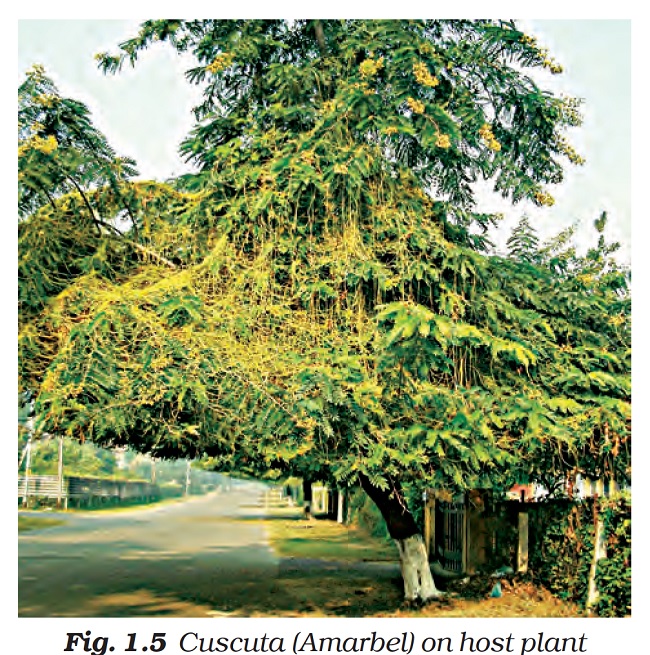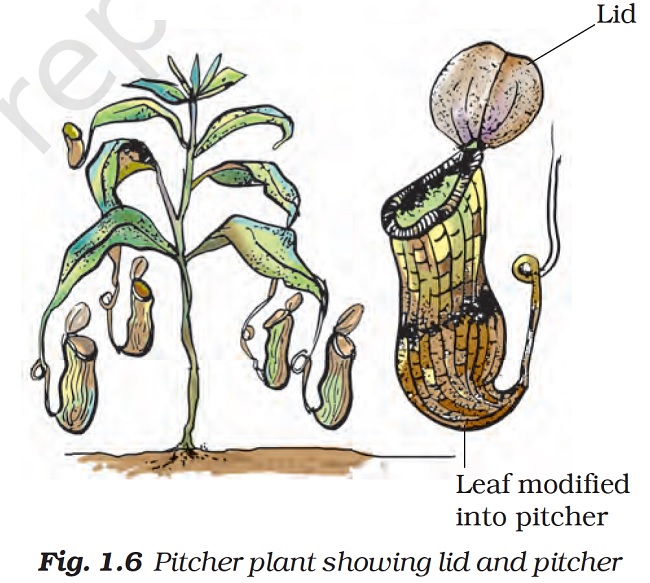1.3 OTHER MODES OF NUTRITION IN PLANTS
NCERT Class 7 Science Textbook for Blind Students made Screen readable by Professor T K Bansal.
There are some plants which do not have chlorophyll. They cannot synthesize their own food. Then, how do they survive and from where do they derive nutrition? Like humans and animals such plants depend on the food produced by other plants. They use the heterotrophic mode of nutrition. Look at Figure 1.5. Do you see a yellow wiry branched structure twining around the stem and branches of another tree? This is a plant called Cuscuta (Amar bail). It does not have chlorophyll. It takes ready-made food from the plant on which it climbs. The plant on which it climbs is called the host. Since it deprives the host of valuable nutrients Cuscuta is called the parasite. Are we and other animals also a kind of parasites? You should think about it and discuss with your teacher
Figure 1.5 Cuscuta (Amarbail) on host plant

Paheli wants to know whether mosquitoes, bed bugs, lice and leeches that suck our blood are also parasites.
Have you seen or heard of plants that can eat animals? There are a few plants which can trap insects and digest them. Is it not amazing? Such plants may be green or of some other colour. Look at the plant in Figure 1.6. The pitcher-like or a jug-like structure is the modified part of a leaf. The apex of the leaf forms a lid which can open and close the mouth of the pitcher. Inside the pitcher there are hair like structures which are directed downwards. When an insect lands in the pitcher, the lid closes, and the trapped insect gets entangled in the hair. The lid closes and the insect is trapped. The insect is digested by the digestive juices secreted in the pitcher and its nutrients are absorbed. Such insect-eating plants are called insectivorous plants.
Figure 1.6 Pitcher plant showing lid and pitcher

Boojho is confused. If the pitcher plant is green and carries out photosynthesis, then why does it feed on insects?
